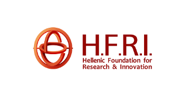SHELF LIFE MONITORING OF GILTHEAD SEABREAM FILLETS Sparus aurata USING BIOGENIC SMART PACKAGING MATERIALS
Introduction
Significant amounts of fish and seafood are wasted worldwide due to spoilage and degradation at various stages of the cold chain (EUMOFA, 2022). The development of innovative smart packaging solutions for monitoring the deterioration of fish products could provide consumers with reliable indicators of product freshness, thereby contributing to reduction in food waste (Tsironi et al., 2018; Li et al., 2022). This study focused on the design of freshness indicators responsible for volatile ammonia compounds, facilitating the monitoring of spoilage within fish packaging environments through visible color changes. The smart packaging systems were formulated using starch and polyvinyl alcohol, enriched with anthocyanins derived from pomegranate juice. The objective was to develop biodegradable, environmentally friendly packaging that delivers real-time visual information on the quality and deterioration of packaged fresh fish.
Materials and methods
The smart packaging system was prepared according to the solvent casting method, incorporating starch and polyvinyl alcohol (PVA) with pomegranate juice added as a natural source of anthocyanidins (Alizadeh-Sani et al., 2020). Aiming at a sustainable production process for the smart indicators, the anthocyanidins from the pomegranate juice were not isolated to eliminate the need for organic solvents and energy-intensive processes. Following preparation, the smart films were characterised for their optical properties, microstructure (SEM), infrared spectrum (FTIR), wettability, water solubility, moisture adsorption (sorption isotherms), color response at various pH values and reactivity to volatile amines commonly produced during fish spoilage, such as ammonia, trimethylamine and dimethylamine. The smart indicators were subsequently placed inside packages containing gilthead seabream (Sparus aurata) fillets. The samples were stored under controlled temperature conditions (4°C) for shelf life evaluation based on chemical (pH, TVB-N) and microbiological fish quality indicators (total viable counts, Pseudomonas spp. and Enterobacteriaceae). The color change of the indicators (ΔE value) and the gas composition in the package headspace were continuously monitored during the storage experiment.
Results and Discussion
Scanning electron microscopy revealed satisfactory microstructural integrity and compatibility between the incorporated dye and the biopolymer carrier. Successful incorporation of the dye was further confirmed through Fourier transform infrared spectroscopy. The developed films exhibited suitable optical and mechanical properties for potential packaging applications. The incorporation of pomegranate juice enhanced the hydrophilicity of the membranes (contact angle reduction from 93° to 82°). The color sensitivity test demonstrated that the color response of smart films successfully monitored the increase in volatile amine concentration and pH values, exhibiting a visible color shift from bright red to purple-green. Preliminary results of the application of the freshness indicators within the headspace of packaged gilthead seabream fillets demonstrated their capability to monitor the accumulation of volatile amines and the progression of fish spoilage during refrigerated storage. A perceptible color change (ΔE>3) was observed from the early stages of spoilage (day 4-5), with intensity increasing as degradation advanced. The indicators showed a reliable correlation with changes in headspace gas composition and were consistent with microbiological and chemical quality indicators of fish flesh, highlighting their potential as effective tools for real-time spoilage monitoring.
Acknowledgements
The research work was supported by the Hellenic Foundation for Research and Innovation (HFRI) under the 5th Call for HFRI PhD Fellowships (Fellowship Number: 20599).
This research has received partial funding from the European Union’s Horizon 2020 research and innovation programme under the Marie Sklodowska-Curie Grant Agreement no 872217 (ICHTHYS) https://www.ichthys-eu.org/about).
References
European Market Observatory for fisheries and aquaculture. (2022). The EU Fish Market.
Tsironi, T.N. and Taoukis, P.S. (2018). Current practice and innovations in fish packaging. Journal of Aquatic Food Product Technology, 27(10), pp.1024-1047.
Li, N., Zhou, S., Yang, X., & Lin, D. (2022). Applications of natural polysaccharide-based pH-sensitive films in food packaging: Current research and future trends. Innov. Food Sci. Emerg. Technol., 82, 103200.
Alizadeh-Sani, M., Mohammadian, E., Rhim, J.W. and Jafari, S.M. (2020). pH-sensitive (halochromic) smart packaging films based on natural food colorants for the monitoring of food quality and safety. Trends in Food Science & Technology, 105, pp.93-144.
